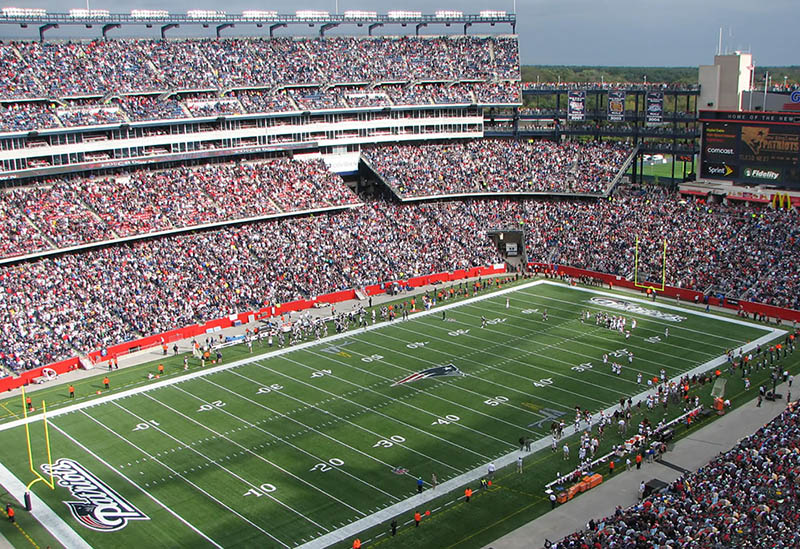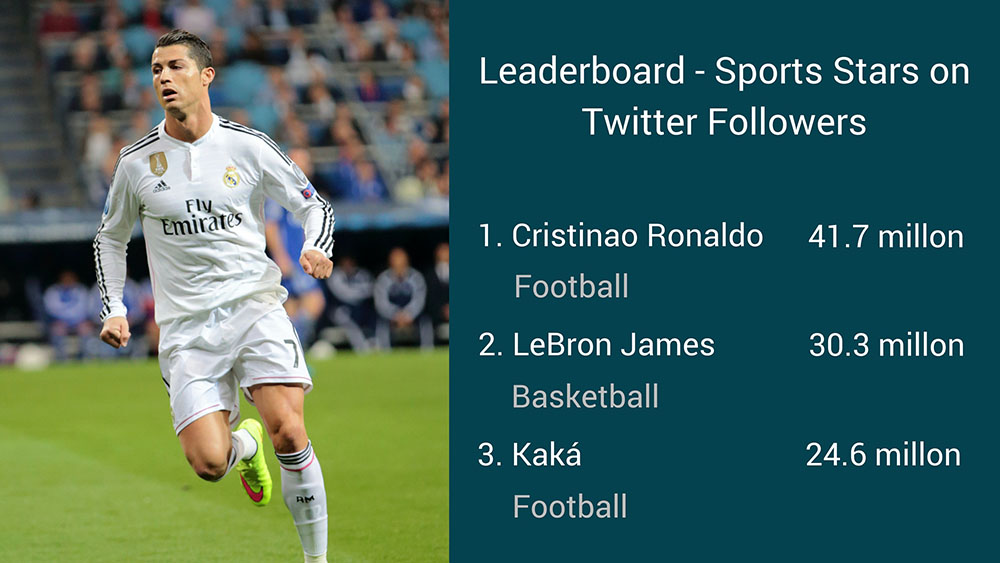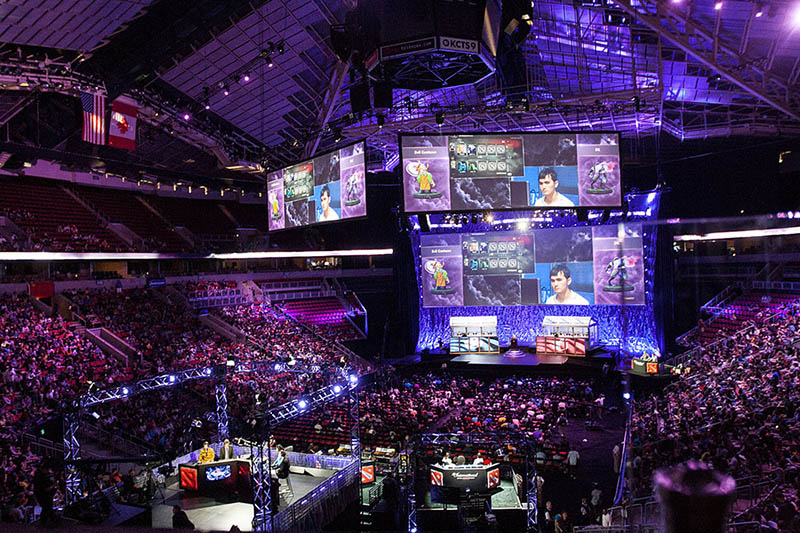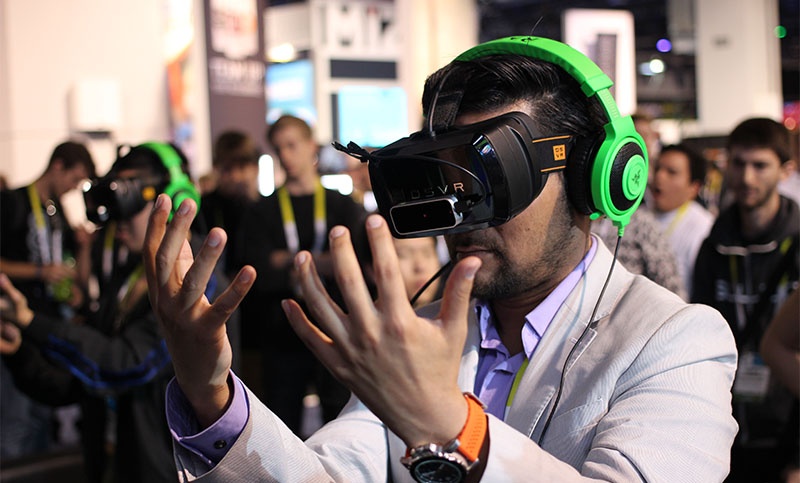Sport, particularly at elite level, is forever being driven forward by tech. As technology becomes ever more ingratiated into our lives, its use in sport will allow us to consume greater amounts of the sports we love - faster, and in ever more inventive ways.
Keep an eye out for these eight areas where technology and sport will combine to drive the industry forward in 2016 and beyond.
Really Big Data
Really big bodies of data have a number of applications that affects both the fans (more on that in "Social Media" below) and teams themselves – specifically player analysis.
Famously, Major League Baseball side the Oakland A's changed the face of their sport forever by adopting a stats-based model to recruiting and building players for their team. Its success in baseball has translated into other sports, with basketball another leading example. 2013/14 was the first season in which all NBA sides used SportVU tracking, a set of six camera which measures the movements of the ball and every player on the court.

Despite its undoubted success, grappling over the traditional methods of human "eye-test" scouting and computer-based analysis rages on in particular areas of the industry. One of which is football. Given the history involved in generations of scouting and coaching methods, the idea of throwing all that out in favour of a mouse and keyboard remains largely skeptical.
Fans of the process however can point to Denmark for an example of the success of the Moneyball system in football. Little known Danish team FC Midtjylland secured a first major trophy in their history in 2015 – winning the Danish Superliga off the back of a data-drive approach similar to Moneyball.
The owner Matthew Benham then tried to convert that success to English football. At Championship side Brentford, the system has so far failed to convert into trophies, with the Bees sitting comfortably in mid-table.
Regardless of whether sports adopt a full-blown data-driven approach to scouting or not, data is collected in larger amounts today than ever before. Its use in sport will only grow stronger.
The Globalisation of your Local Team
As access to any professional sports team around the globe becomes easier, the idea of supporters only supporting their local team becomes ever more unlikely. Breaking into new markets abroad is vital for elite sports teams who want to maintain growth – and the process is already well underway.
The US is one market experiencing rapid growth in the soccer market, an opportunity Chevrolet looked to act upon when becoming Manchester United's main shirt sponsor in 2014. For many Premier League teams, purchasing a player from the Far East brings with an opportunity to grow your fanbase – and a number of commercial opportunities alongside.
It may lead to an increase in half-and-half scarves and holiday supporters in stadiums (much to the fury of die hard members), but it increases revenue opportunities for clubs and allows them to invest in a successful club on and off the field.
Smart Arenas
Thousands of mobile devices are carted into sports stadiums worldwide, but stadiums are yet to take advantage of all that tech to increase the spectacle, engagement and excitement levels of matches.

Thanks to powerful Wi-Fi enabled stadiums however, we'll soon be able to flip out our phones out and order food directly to our seat, listen to play-by-play commentary and even check the shortest queue to the toilets. Plus, wireless charging will keep your phone topped up right where you sit.
Social Media
Thanks to social media, we need everything sort 5 minutes ago – but as it happens is as good as we can get it. With sport, that itch to be in the loop at all times is amplified – and Twitter and Facebook are likely to be your first stop in order to get involved with huge sporting events.
These channels have got the audience numbers and level of discussion – all that's missing is some official video footage.
That's all about to change however. Social media channels have recently entered the ring for broadcasting rights for sporting events. Twitter scored the first major victory when they secured broadcasting rights to Thursday night NFL games. Bidding alongside Amazon, Yahoo and Facebook, big tech companies fighting for live-sport is one we're likely to see again and again in the future.
For us, it's good news. Rather than paying a premium to watch the teams we love and going to social media to engage in discussion on the match, live coverage and in-play discussion will be brought together. Plus, for now at least, Twitter will broadcast all their NFL games for free.
Sports Stars as Media
Another bi-product of social media and its global reach is the media properties that famous sports men and women have now become. Take Cristinao Ronaldo. 41.7 million Twitter followers – every single one able to see the Nike boot he proudly advertises in his profile image.
Ronaldo's club Real Madrid on the other hand, are left lagging behind on a mere 19 million. Elite sportspersons posses a platform to reach millions across the globe – an ability that most organisations could only dream of.

It leads to a number of lucrative commercial opportunities for the players, like the £14.1 million Ronaldo earns from Nike every year.
The Future of Broadcasting
How and where we watch huge sporting tournaments is also set to evolve in the near future. In terms of broadcasting rights, the financial power of networks such as Sky and BT will come under increasing amounts of scrutiny from huge tech companies who want a slice of the action (and that's without mentioning the slow death of elite sport on free-to-air stations).
Seeing Amazon, Netflix and Facebook competing in the sports broadcasting market is only going to increase as our viewing habits change with them.
In terms of how we view sport, the line between watching at home and in the stadium is about to get blurry. Thanks to Virtual Reality, technology revitalised and reborn since its initial emergence in the 1980s, you'll soon be able to sit next on the front row on centre court at Wimbledon, or next to Lewis Hamilton as he tears round Monte Carlo – all from the comfort of your sofa.
eSports
Is it a sport worthy of Olympic recognition? That's what pioneers of eSports (competitive video gaming) are championing. Whilst that remains a dubious prospect, what can't be denied is the commercial growth eSports has seen over the past few years.

134 million people watched eSports in 2014, and pro-gaming made Sumail Hassan a millionaire at the tender age 16. With global revenue clocked up at $612 million in 2015, eSports business is booming – leading to major networks such as ESPN and Fox Sports securing broadcasting rights to air international tournaments on TV.
Wearable Technology
At the moment you probably only know wearable tech as smartwatches and those wristbands that help you track your morning run. However, the scope of wearable tech, and how it will eventually impact sports performance, safety and analysis, stretches far beyond anything we've seen on an Apple Watch advert.
Take Heddoko as just one example. Their smart compression shirts and trousers track the movement of joints throughout exercise, before compiling all the data and offering live, feedback on how that athlete can avoid muscle injury – like a virtual coach.

Under Armour's E39 shirt works in a similar fashion - collecting data such as heart rate, lung capacity and metabolism to provide live data on athlete performance.
These are just two of a number of examples of a growing trend in sports tech. Embedding smart devices into ordinary clothing, technology can help us track our performance down to the most accurate of points, alongside monitoring the health of athletes during a game.
The tech could even be life saving. Pressure is growing on sports such as tackling in Rugby, heading in football and American football with regards to player safety. To combat it, one potential use of tech is sensors embedded in the helmet (for American football at least) that are able to measure the impact of hits to a player's head.
As our knowledge of the dangers of concussion grows, expect to see its use in sports increase in 2016.
